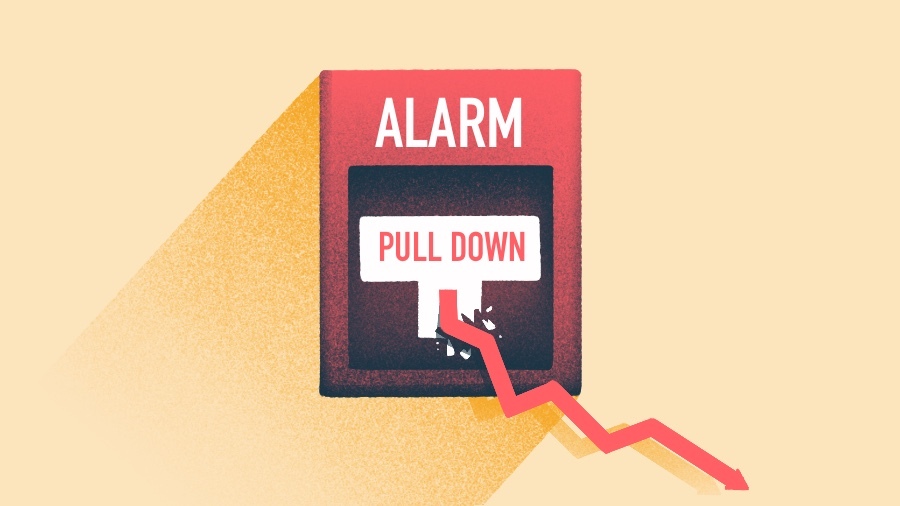Editor’s note: A clarification has been added to this article.
By Itay Sagie
In recent years, a concerning trend has emerged in the entrepreneurial landscape: a steep decline in the formation of new startups.
Search less. Close more.
Grow your revenue with all-in-one prospecting solutions powered by the leader in private-company data.
Let’s take a closer look at this phenomenon, including potential reasons for the decline and opportunities for future entrepreneurs to leverage this unique situation.
Steep decline in new startup formation
Analyzing data from Crunchbase on 27,000 software companies founded between 2020 and July 2023 in the United States, Israel and the European Union, a consistent and concerning decline in new startup formations becomes apparent.
From 2020 to 2023 (estimated), the number of new startups formed in the U.S. is on pace to decrease by approximately 86%, dropping from 6,424 to 1,046. Similarly, Israel is on track to witness a decline of around 89%, from 333 to 34 startups. In the EU, the number, as of mid-year, is on pace to decrease from 5,147 to 640 startups, reflecting a decline of about 87%.
Possible reasons for decline in startup formation
Economic downturn, political unrest and lack of early-stage capital:
The COVID outbreak in 2020 is likely to have been a cause for the decline in new startups during 2020 and 2021. The economic downturn — particularly in 2022 and 2023 — coupled with the geopolitical unrest within Ukraine involving global superpowers, together with the internal political unrest in Israel, has not helped numbers to rise.
Investors, too, have a difficult time raising new funds, and are slowing their investments.
The number of funding rounds in the U.S. decreased from 8,147 in 2022 to an estimated 6,050 in 2023, representing a decline of approximately 26%. Similarly, Israel saw a decline from 415 funding rounds in 2022 to an estimated 284 in 2023, reflecting a decline of approximately 32%. These chains of events have led to a reduced availability of capital for new startups, hindering their formation and growth.
Investors becoming more risk averse:

Looking at data between 2020 and 2021, the economy was doing better, and yet there was still a decline in new startup formation. A possible contributing factor to the decline in new startup formations is the COVID outbreak, which caused alarm and likely prompted many people to take less financial risk.
This was coupled by the shifting focus of investors, who also looked to take less risk.
While the number of funding rounds may have increased in certain years, there is evidence to suggest that investors have increasingly directed their investments toward more mature companies and growth-stage startups rather than early-stage ventures. This shift in investor focus can limit the availability of funding for new startups and make it more challenging for early-stage entrepreneurs to secure the necessary capital to launch their businesses.
Opportunities for future entrepreneurs
More market needs left unmet:
The decline in new startups presents a silver lining for aspiring entrepreneurs. By identifying and addressing unmet market needs, entrepreneurs can seize the opportunity to create innovative solutions. With fewer startups entering the market, there are untapped niches and emerging demands waiting to be met. Through thorough market research and understanding shifting preferences, entrepreneurs can establish new startups that cater to these unaddressed needs.
Bootstrapping and independence:
Entrepreneurs who are able and willing to bootstrap their ventures — relying on their own resources and revenue generation — can leverage the current downturn to their advantage. With limited access to external funding, bootstrapping allows entrepreneurs to maintain control over their businesses and build a solid foundation. By focusing on profitability and sustainable growth, these startups can position themselves for success when the market conditions improve.
Market consolidation and M&A:
There is less capital available for funding, and public markets have gone cold (with IPOs down from 1,035 in the U.S. in 2021 to around 80 so far in 2023) entrepreneurs can explore growth and liquidity opportunities through mergers and acquisitions. Market consolidation and strategic partnerships can facilitate growth even in challenging times.
Clarification: Due to lag times with new companies being added to Crunchbase, the estimated number of new startups for 2022 and 2023 is likely low and will increase over time as companies are retroactively added to the database.
Itay Sagie, a guest contributor to Crunchbase News, is a seasoned lecturer and strategic adviser to startups and investors, specializing in strategy, growth and M&A. You can connect with him on LinkedIn for further insights and discussions.
Illustration: Dom Guzman

Stay up to date with recent funding rounds, acquisitions, and more with the Crunchbase Daily.









![Illustration of pandemic pet pampering. [Dom Guzman]](https://news.crunchbase.com/wp-content/uploads/2021/03/Pets-2-300x168.jpg)

67.1K Followers